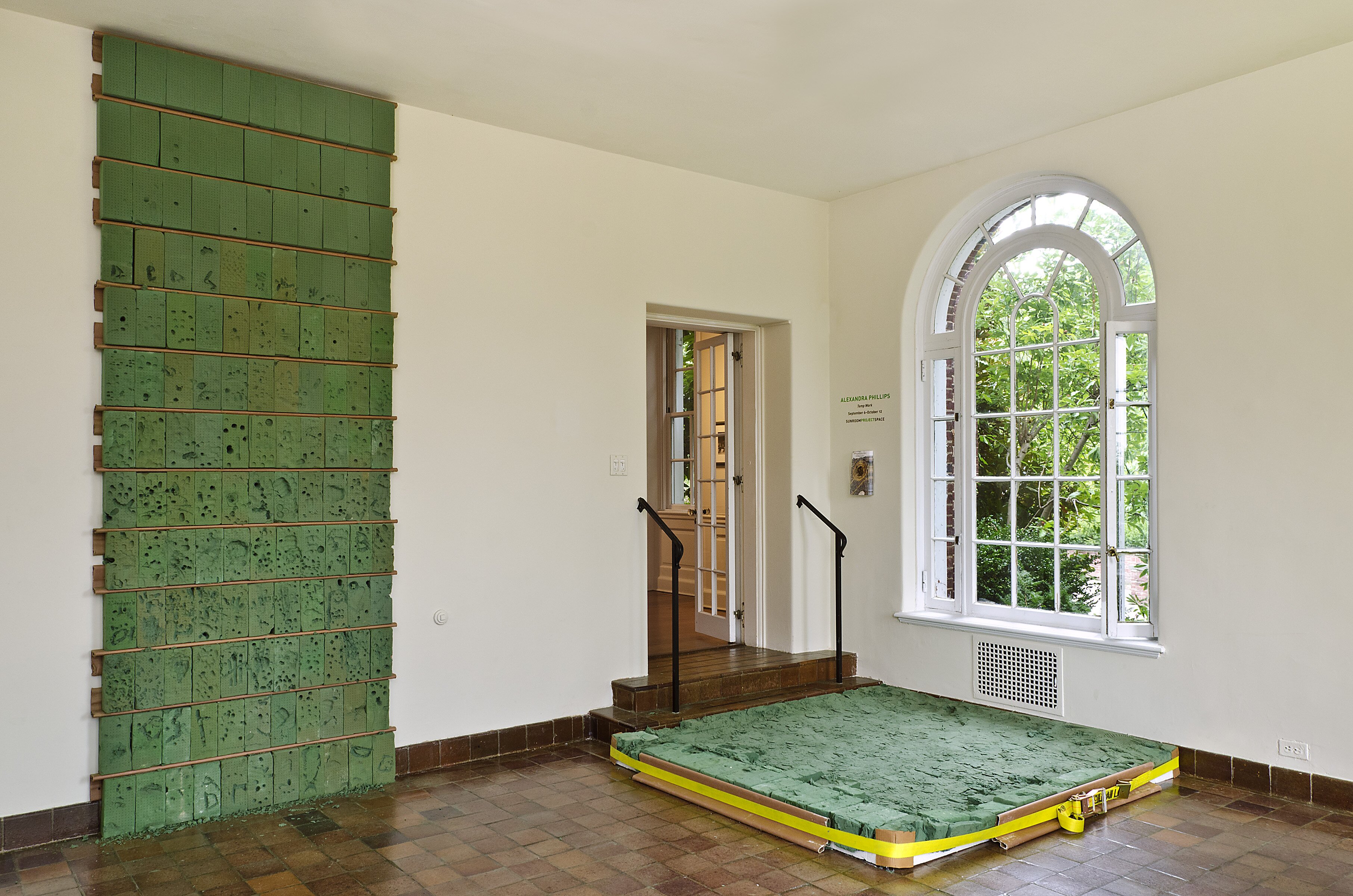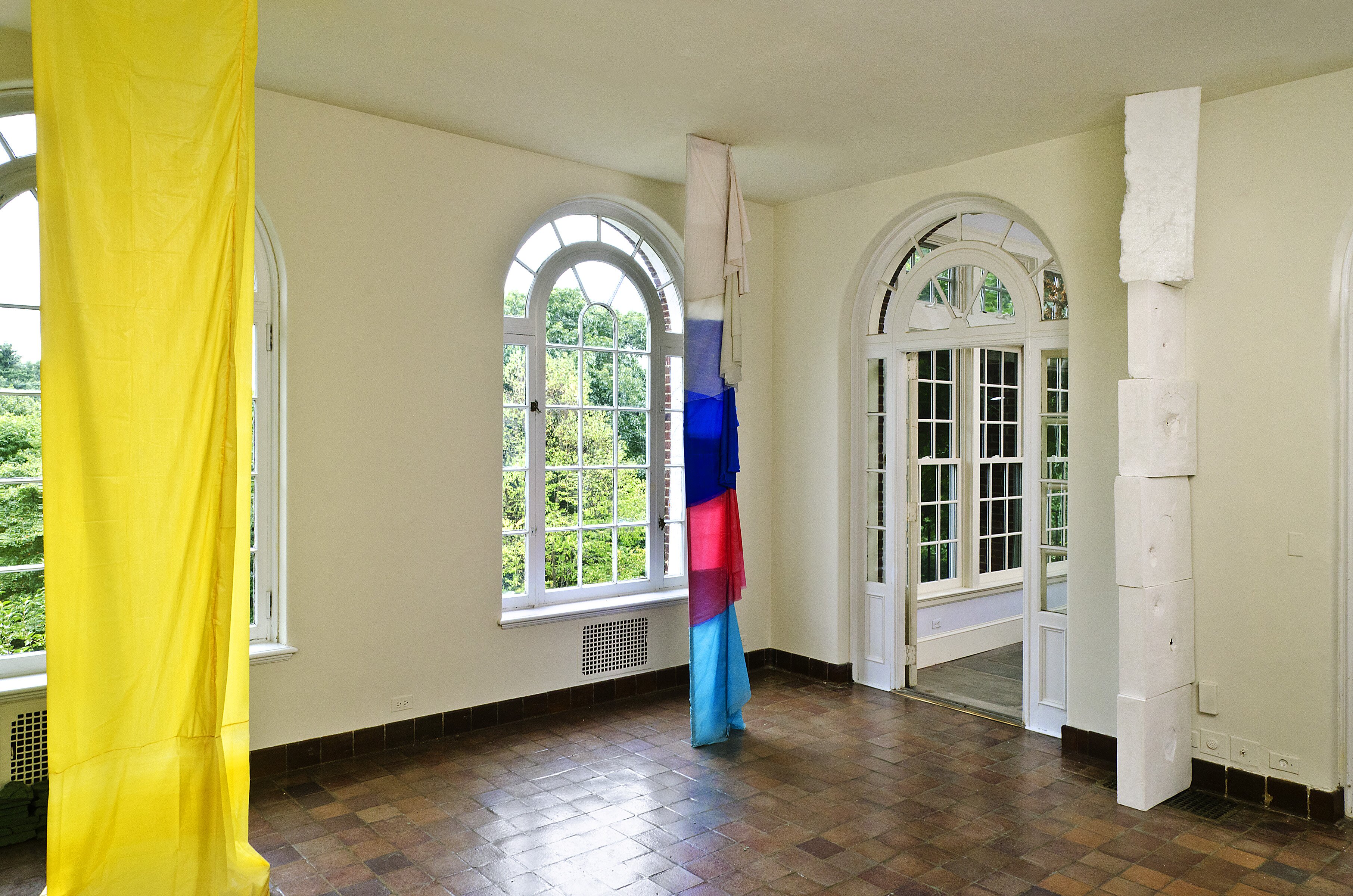
Alexandra Phillips’ work reexamines disregarded every day objects. She’s able to repurpose old toys, discarded signs, and materials that are specific to her surroundings to give them a sense of materiality and to create a platform to examine the excesses in every day. She defines her role as a “cultural worker.”
During our many conversations, we had a chance to talk to her and see her studio practice at her Bushwick basement workspace and to see her work out of context of her working environment and in a show at her residency at Wave Hill.
Phillips’ work has been included in exhibitions at the Emily Harvey Foundation, White Box and GoodWorks Gallery.
In 2013, she was the first artist to participate in a residency at The Vyrodepseio in Athens, Greece. Most recently, she was a 2014 Van Lier Visual Artist Fellow at Wave Hill.
Philips’ work is currently on view alongside Christine Heindl in a 2-woman show at through November 9th.

F: Your surroundings seem really important in your work. Do you seek out objects in your surroundings or travel to find these objects?
AP: I think I seek surroundings that seem to have the potential to contain the things I want to use. I have come to realize that a big part of my practice is meeting and engaging with other people who have access to the materials I seek. Basically I like people, I am curious about others; I think there is a lot to learn in a casual conversation.
This translates to my work as being curious about the materials that inhabit their respective worlds. By being open to interacting with all types of people that hang around here, or work here, or live here, my knowledge of what materials may or may not be available expands and in turn my perspective on my surroundings becomes better informed.
F: Can you talk more about how you find your materials?
AP: Lately I have been replacing found object with acquired object when I write/talk about the materials in my work. It seems a little semantic but I think acquired is a more apt word in my case because it suggests a level of chance while also suggesting a clear act or intentional effort. So I am using things that exist before me, but in most cases there is some obstacle to overcome or some exchange that has to happen before I can get the thing for my work.

AP: I am particularly attracted to materials that are by products of other activities (the cardboard angles used to pack heavy appliances very specifically designed but always thrown away). I have a desire to participate and this is my way of inserting myself into the ebb and flow of the happenings in my neighborhood.

AP: I like things that seem in unlimited supply (egg crates outside bakeries in Chinatown evening, grocery store coupons in your fence) I am puzzled by the insane amount of materials and goods that human beings put into the world. We have this tendency this need to fill up our surroundings with something, anything! I am interested in that cycle and that compulsion. I look upon it fondly, it has brought forth some of the most pointless things as well as the most useful.


F: There’s a conscious decision about where these things have been through the way they are presented. Can you talk about the different modes of presentation you employ like the platforms to the wall pieces?
AP: I work with such a broad range of materials because I like my studio practice to be fluid. When I am making a piece, it feels similar to solving a puzzle. I’ve already made the choice of what is available to work with during the collection process. Next it is a matter of taking advantage of the inherent characteristics of each thing, I try to find a place where material and idea meet and that’s how I know the form a piece should take. I think about my freestanding pieces as containing their own presentation method. So even though the work might take the format of pedestal and object, I think of the thing as being an autonomous work, top to bottom. I think the space between floor and object is an exciting place and I have come up with various methods of activating it, such as the plaster covered cardboard “pedestals”.


“Photo by Stefan Hagen , Installation view, Sunroom Project Space, Wave Hill, Bronx, NY
AP: I go back and forth between making works that are self-contained and things that are more dependent on the space they are in and the architectural elements in it. So a lot of works in my low ceiling studio span floor to ceiling and depend on those as a method of support (see any pics from TempWork).

AP: I think I am guided by the condition of the thing I am working with. I find myself doing a kind of restoration, not to make the thing look new necessarily, but to highlight its condition at the time.
You can see more of Alexandra Phillips’s works at .




